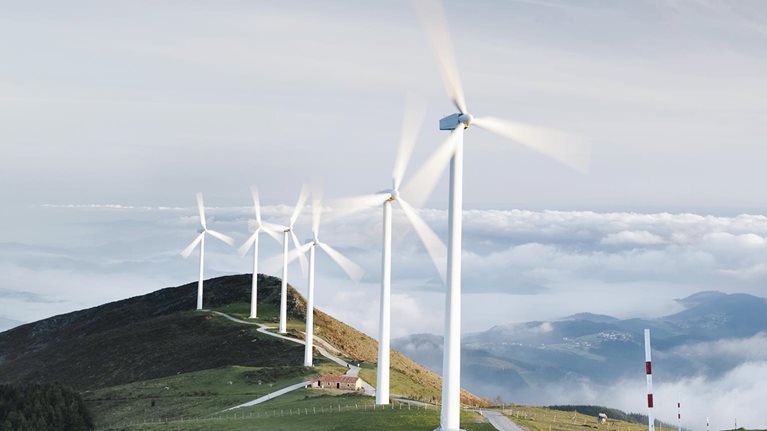As the EU emerges from the 2022 energy crisis and the world faces increasingly severe impacts of global warming, the question of how to address the ambitious decarbonization agenda while stimulating economic growth is more relevant than ever. Luxembourg is aiming to exceed the EU-wide goal of 55 percent reduction in carbon emissions by 2030 and net-zero emissions by 2050 and to simultaneously double down on energy affordability and energy supply security. While these more demanding targets pose challenges, meeting them can benefit Luxembourg and its businesses, which will play a critical role in the transition. If they extend their emission-reduction sights beyond direct and indirect emissions to include those up and down the value chain, their cumulative action may even exceed Luxembourg’s new targets. In the process, they could profit from green growth opportunities and protect their competitiveness.
The size and complexity of the challenge require actions addressing individual value chains in four of Luxembourg’s emission-heaviest sectors: financial services, retail, manufacturing, and construction. The following paragraphs outline some of the steps businesses in these sectors might consider to meet their emission-reduction goals and the opportunities they could unlock.
Raising Luxembourg’s sustainability ambitions
To curb greenhouse-gas (GHG) emissions, the European Union has agreed to cut them 55 percent by 2030 and achieve net-zero emissions by 2050. Luxembourg is faced with its own specific set of challenges. While the country imports about 95 percent of its energy, it still registers Europe’s highest GHG emissions per capita, at 20.6 tons a year.1
The EU’s ambitious targets, potential regulations, and consumer and investor preferences for sustainable products and services are leading Luxembourgish businesses to redouble their efforts to reduce emissions. Many companies are looking beyond direct and indirect emissions (Scope 1 and 2) to address those in their supply chains (Scope 3) (see sidebar, “Scoping emissions”).
However, Scope 3 emissions typically constitute the lion’s share across industries and geographies, often exceeding 80 percent of the total.2
Since Luxembourg is tightly integrated into international supply chains and the European economy, its carbon footprint extends well beyond its own borders. Luxembourgish companies with ambitious decarbonization agendas will need to take broad action on all emission fronts.
Opportunities for decarbonization leaders
Many stakeholders, including regulators, investors, and consumers, are pressing Luxembourgish companies to shrink their carbon footprint. Investors focused on environmental, social, and governance (ESG) issues want transparent reporting on supply-chain emissions, and consumers have a preference for sustainable, environmentally-friendly products and businesses.34 According to a survey of Luxembourg’s consumers, 59 percent prefer biodegradable, environmentally-friendly products and packaging when given a choice, and 55 percent say they make purchasing decisions based on supply-chain transparency and traceability.5 Many companies recognize that this consumer demand for sustainable products and practices opens new sources of value, especially for first movers. This also holds true on the B2B side, where materials value chains account for around 20 percent of global emissions, and green premiums are being paid for lower-emission commodities.6 Such efforts may create new customer segments and sustainable business models that tap into the additional willingness to pay, spelling lasting profitability.7
As the public increasingly views sustainability as a license to operate, early adopters of low- and zero-carbon technologies may also soon enjoy easier access to funding. Financial institutions may prioritize sustainability in asset management and allocate more capital to low-emission companies. According to McKinsey research, a 2050 net-zero scenario could shift 70 percent of all capital outlays toward low-emission assets, double the current figure of 35 percent.8
Sector-specific opportunities to reduce emissions
Based on emission intensity9 and relative share of the GDP, the emission-heaviest sectors of Luxembourg’s economy are financial services, retail, manufacturing, and construction (Exhibit 1).10

These sectors vary in the amount of emissions that they generate in each scope. For example, the construction sector produces a large amount of Scope 3 emissions due, in part, to emissions associated with its raw materials. In contrast, the financial-services sector generates a smaller amount of Scope 3 emissions, mainly because calculations typically exclude those related to its investment portfolios.
Specific value chains within these sectors also vary in the emissions they generate per scope. For example, in the manufacturing sector, machinery firms generate Scope 3 emissions primarily via their downstream products, whereas steel companies’ smaller share of Scope 3 emissions is split between upstream and downstream sources. These variations in emissions’ scope and amount mean that only value-chain specific actions, can reduce emissions in Luxembourg’s major sectors (Exhibit 2).

Sector-specific steps to reduce emissions
Luxembourg’s most carbon-intensive sectors can take steps to begin curtailing emissions of any scope, beginning with setting science-based and accountable standards and targets. Depending on where they are in their decarbonization journey, companies may consider some or all of a variety of measures to raise their efforts from good to great.
Financial-services companies based in Luxembourg can pursue no-regret options such as adopting renewable energy sources, improving the energy efficiency of buildings, optimizing supplier choice for CO2 emissions, and offering incentives for employees to use sustainable commuting options. Additionally, they might:
- adapt their IT infrastructure to collect, aggregate, and report on ESG data across existing processes, such as making credit decisions and establishing a robust data-governance model11
- incorporate climate risk into all risk-management processes, potentially extending it to individual counterparties
- establish a baseline for climate-related exposure across sectors and geographies by measuring financed emissions, especially in emission-heavy industries
- set emissions goals and define sector-specific reduction pathways on which to measure progress
- define ways to meet sector-specific targets by engaging with companies, shifting their portfolio to more climate-conscious investments, offsetting emissions, and using green financing12
Retail companies can start by identifying their subsector-specific abatement areas, as apparel retailers and grocers face very different challenges, such as managing shopping mall operations versus ensuring cold chain transportation of perishables.13 They also might:
- diversify their product portfolios to include more sustainable alternatives by sourcing products regionally or developing communication strategies to promote sustainable foodstuffs
- analyze their supply chains to determine the most sustainable sourcing options and foster emissions transparency at the product level
- optimize packaging materials14
Manufacturing firms might better calibrate their operations, supply chains, and business models to promote a lower-carbon future.15 Specifically, they might:
- shift toward more sustainable energy sources
- explore in-situ resource production (biogas or hydrogen)
- work with upstream and downstream suppliers to develop carbon scenarios and set shared emissions targets
- digitize their processes and organize their supply chains by applying new technologies and scrutinizing purchasing decisions to curb resource demands
- optimize their product designs from end to end to find opportunities to reuse materials and reduce their materials footprint16
Construction companies will likely remain a major contributor to overall emissions, given ongoing demand. Nevertheless, local construction companies might:
- install more efficient heating and cooling systems in existing buildings
- design to improve building footprints and levels of insulation to reduce sources of emissions
- decarbonize materials by selecting more sustainable alternatives, such as replacing clinker with silica fume in cement and electrifying equipment
- reuse scrap materials and reduce recycling losses to boost resource efficiency
- modularize production or move it off-site to limit emissions by optimizing processes17
The financing challenge
Taking these steps will be costly. Reaching net-zero emissions in Europe by 2050 will require investing an estimated €28 trillion in clean technologies and techniques over the next 30 years. While new injections of cash will cover a substantial part of overall financing needs, reallocating planned investments in emission-heavy technologies (estimated at close to €800 million a year) is projected to provide most of the required funds.18
Private financial institutions, such as banks, institutional investors, and private equity or venture capital funds, will address about 55 percent of all net-zero investment needs.19 Climate-related private-market investment far outpaced the broader market in 2022 as measured by deal activity, the amount of capital deployed, and capital flows into dedicated funds.20 But this financing will depend on the targeted project or technology. More mature net-zero technologies, such as renewable energy, could receive quasi-full funding from private lenders through project debt or balance-sheet financing. But emerging or riskier net-zero projects might require public investment to support private institutions.21 For Luxembourg, the practical application of the EU’s newly released Green Deal Industrial Plan could be a step in this direction.
For banks, the climate transition will also represent an opportunity to tap into the strong demand and willingness to pay a premium for green financial products. Survey data indicate that banks are well positioned to leverage their perceived trustworthiness and expertise to provide decarbonization advice, if they can simultaneously educate consumers about the available options. Ultimately, banks can thereby differentiate their brand perception to emerge as credible climate leaders.22
Whether Luxembourgish companies can attract the required financing to advance toward their net-zero goals will depend greatly on the types of projects they undertake and the investment of effort and budget forthcoming from private and public institutions.
A path forward
If Luxembourg’s major sectors assess, report, and mitigate their carbon footprint with attention to Scope 3 emissions, they can make significant progress toward meeting or even surpassing national goals for reducing emissions. At the same time, remaining competitive will require companies to capitalize on the opportunities offered by current and future sustainability efforts.
Success will require segmenting initiatives to reduce emissions by business model (portfolio change or capital investment, for example) and by their financial implications.
With concerted effort and a business community ready to make the most of sustainability opportunities, Luxembourg can go far toward achieving its ambitions for decarbonization.


